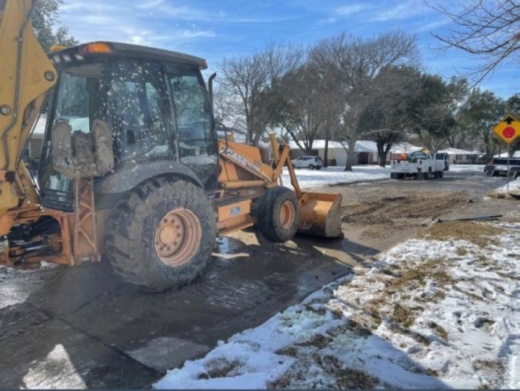Controlled outages began in the early hours of Monday, Feb. 15 and continued through mid-day Thursday, Deputy City Manager Don Magner said during a Feb. 22 council briefing. Outages peaked at around 10 a.m. on Tuesday, when nearly 17,500 residents were without electricity.
Close to 200 residents were still without power Thursday evening, but those outages were due to equipment failures, Magner explained.
“We did have quite a bit of damage,” he said, adding that Oncor had fully restored power to the city by Saturday evening.
Demand for water far outpaced supply over the six-day weather event, Magner said. More than 32 million gallons were delivered to Richardson on Feb. 14, which is more than double the five-day average of 15 million gallons per day this time of year, according to the North Texas Municipal Water District.
Most of this was due to residents dripping water from their faucets, Magner said. The city will issue a $15 “drip allowance” credit on all March water bills to compensate for this usage, he added.
“There was a lot of water being used, but that was because we were advising people to [leave their faucets on drip] to protect the infrastructure in their homes,” he said.
The issue of heightened demand was exacerbated by damage to equipment caused by freezing temperatures, Magner said. One water district plant was also offline because use is typically low in February, he added.
Staff from departments across the city rallied to respond to the crisis, Magner said. The fire department responded to 752 calls for service, which far exceeds the total number of calls they have received during other disasters, such as the October 2019 tornado, he said.
The police department responded to 63 weather-related car accidents, 58 of which occurred Sunday night through mid-day Monday, when temperatures dropped as low as 5 degrees Fahrenheit. The 911 dispatch center averaged 803 calls per day or 33 per hour, which is 35% higher than what they would normally manage, Magner said.
In terms of infrastructure, there were 748 emergency cutoffs to water lines, 26 water main breaks and 48 intersections that were compromised in some way, Magner said.
Magner encouraged homeowners, renters and business owners affected by the storm to self-report damage through an online survey administered by the Texas Division of Emergency Management. This is essential in helping the state make the case for additional funding from the federal government, he said.
The city is opening a disaster recovery center Feb. 23 that will help residents and business owners fill out the survey as well as applications for assistance programs. Assistance is available via the Federal Emergency Management Agency as well as through the Small Business Administration. The center will be open until Saturday from 9 a.m.-3 p.m. in the Parks Room of City Hall and from 3-6 p.m. in the Library.
More information on assistance for affected residents and business owners is available on the city’s website.
Editor's note: This story has been amended to reflect the correct name of the Texas Division of Emergency Management.





